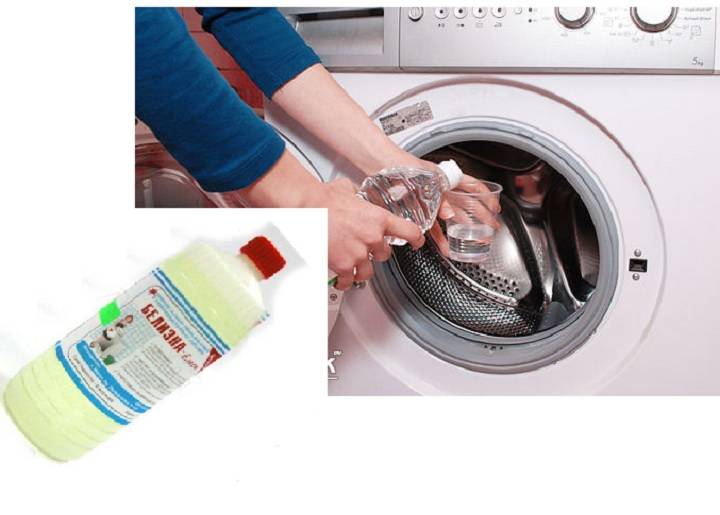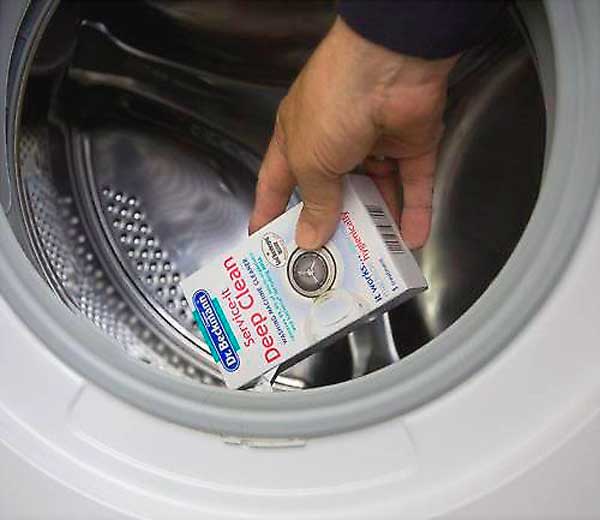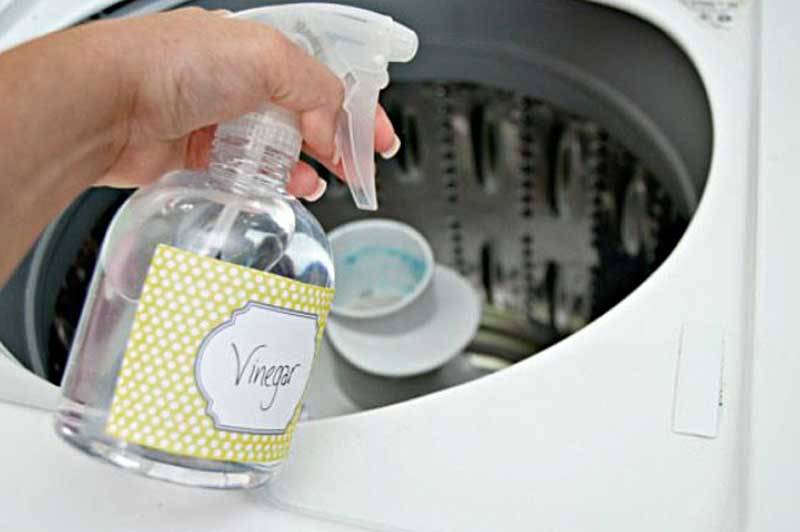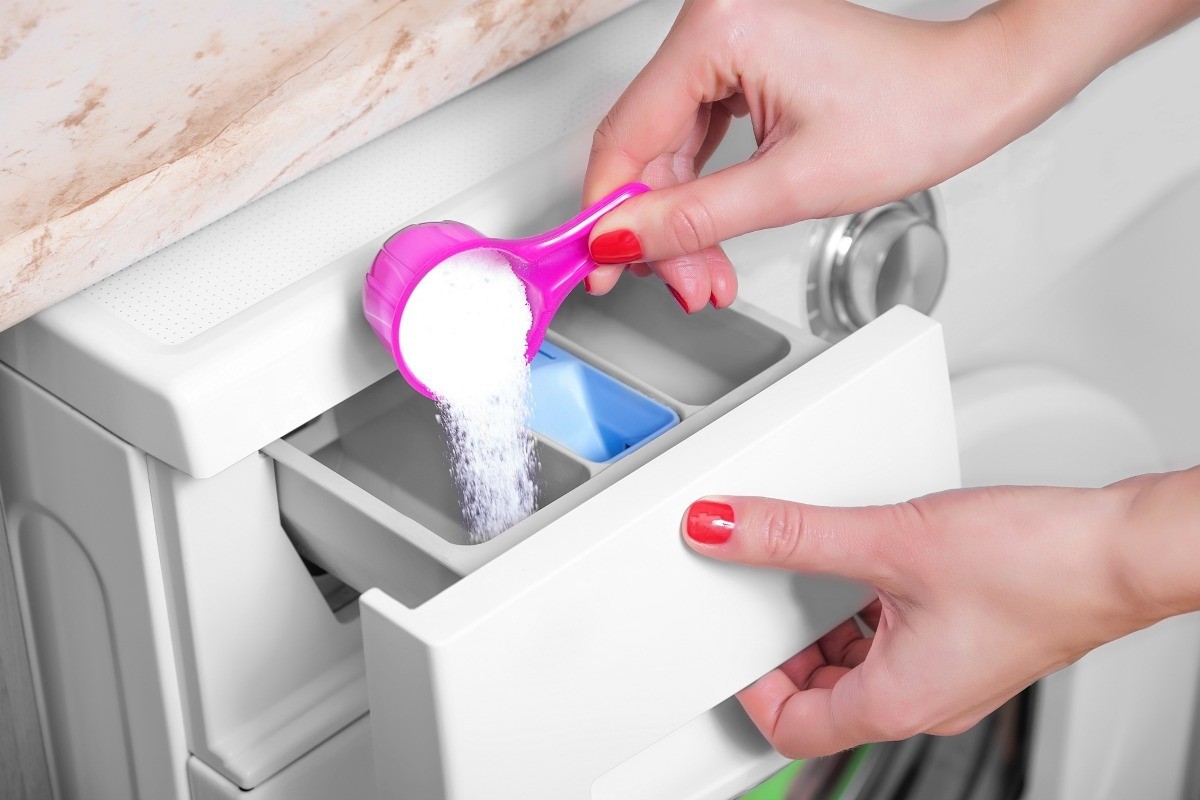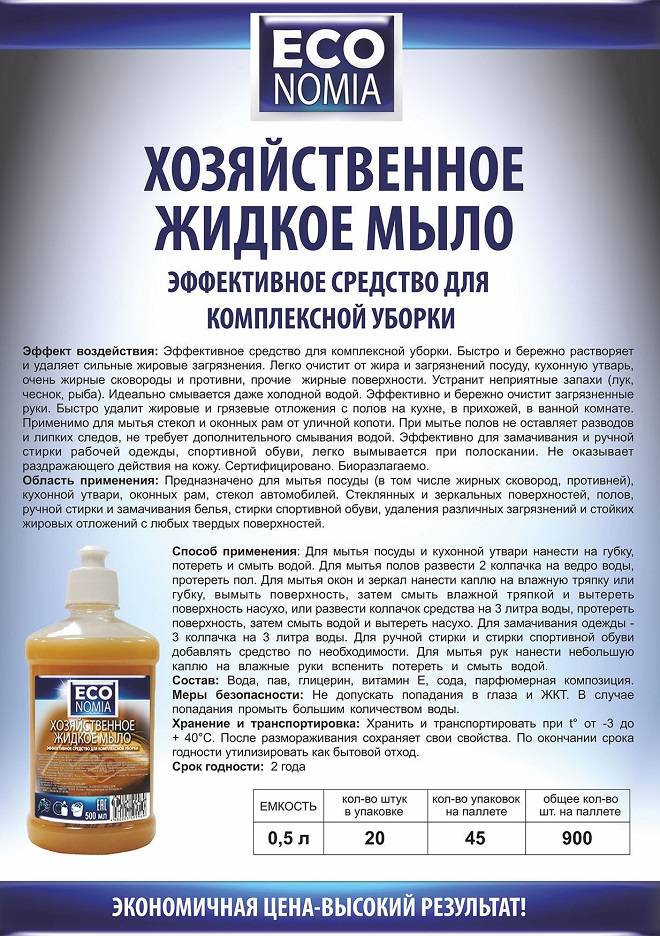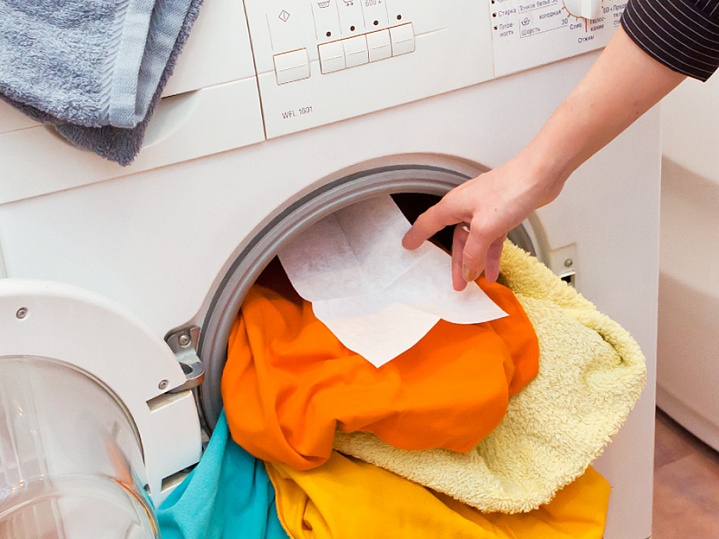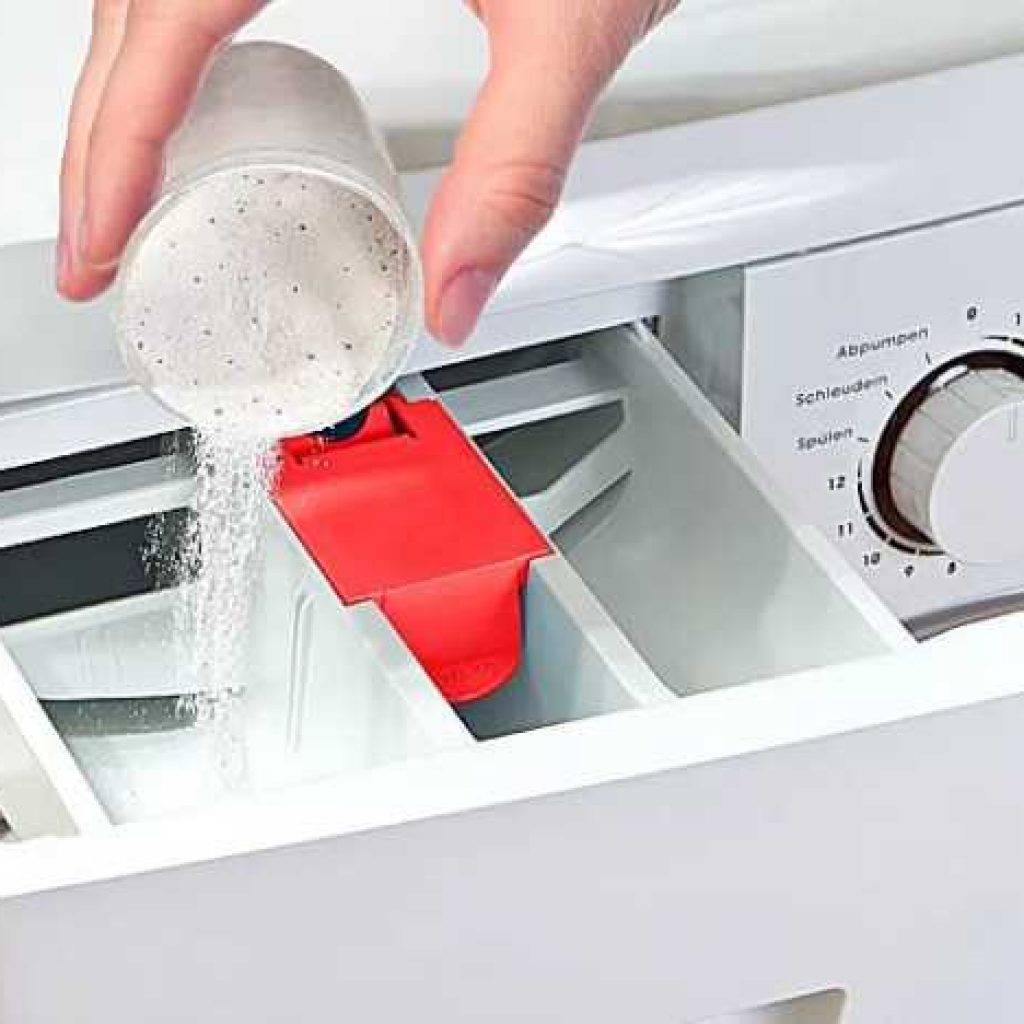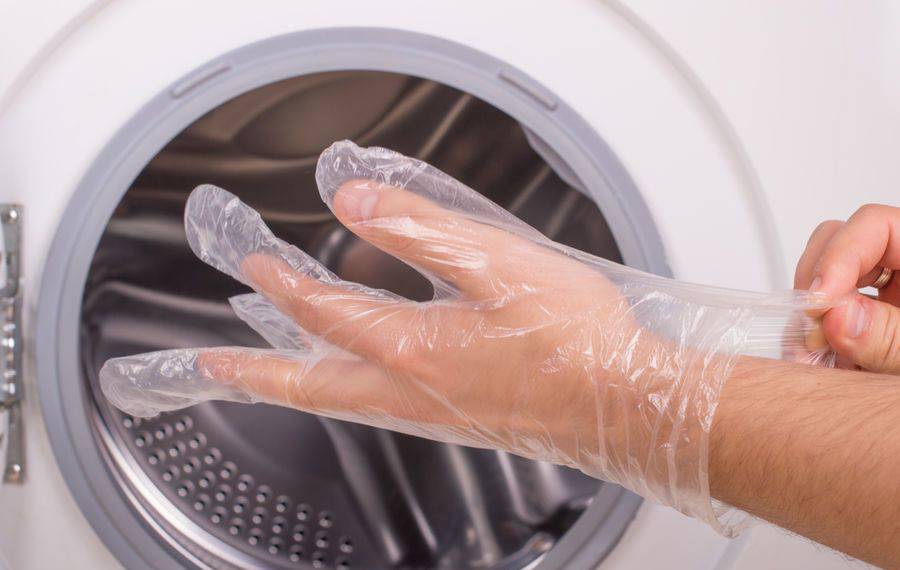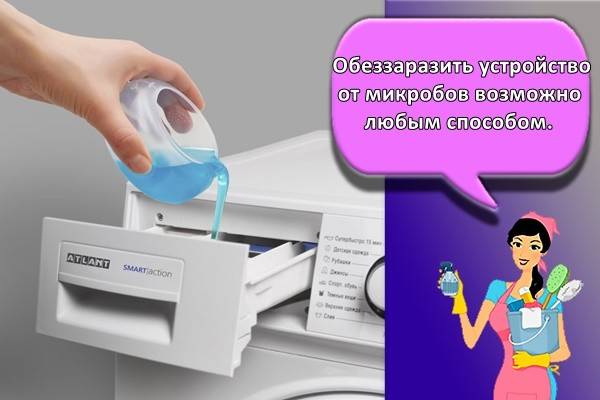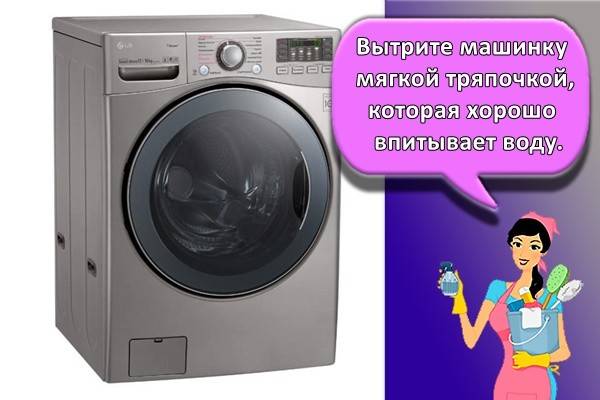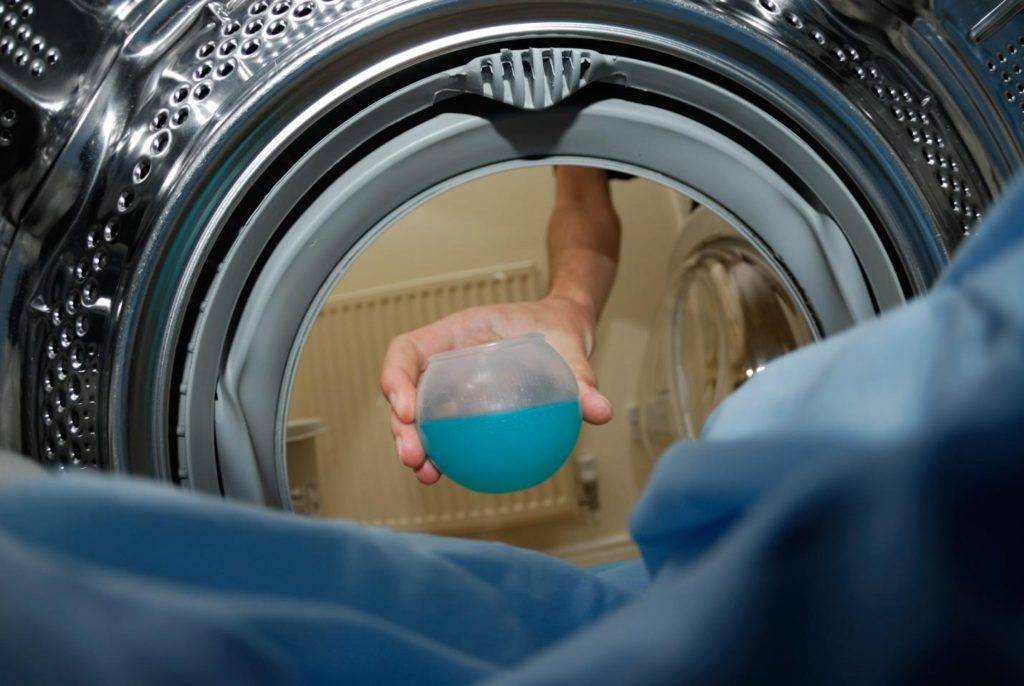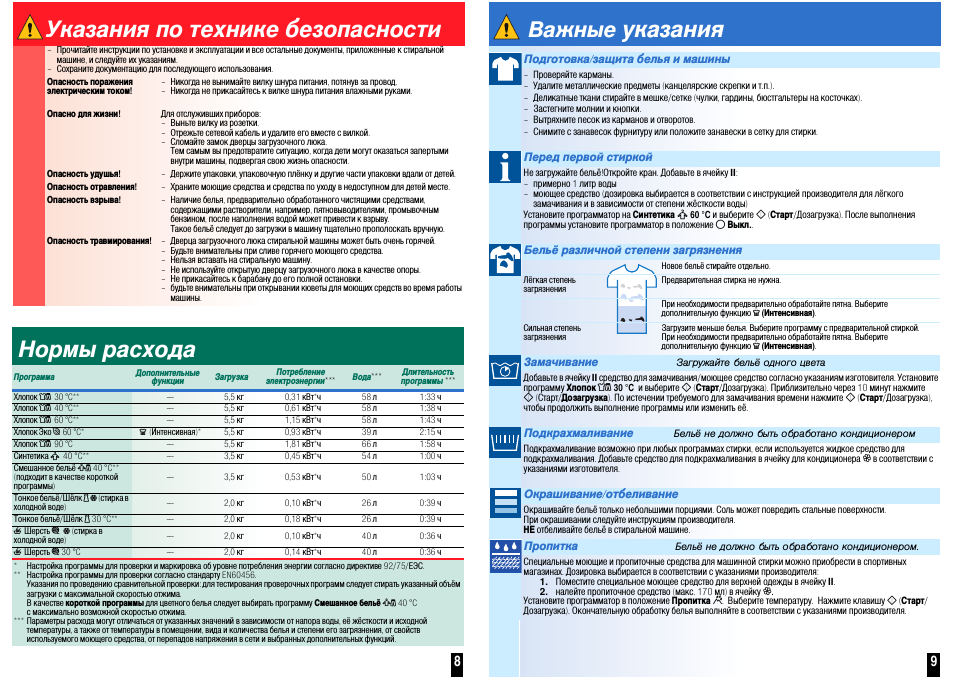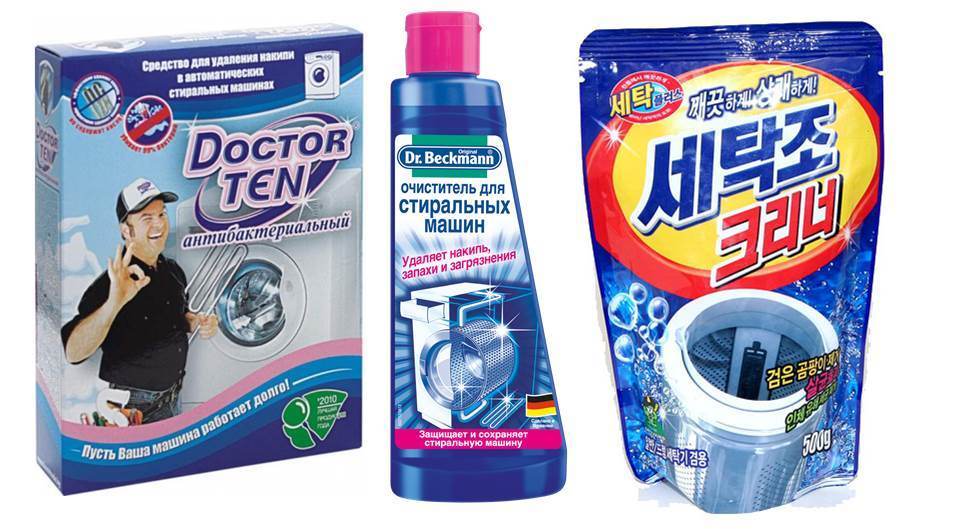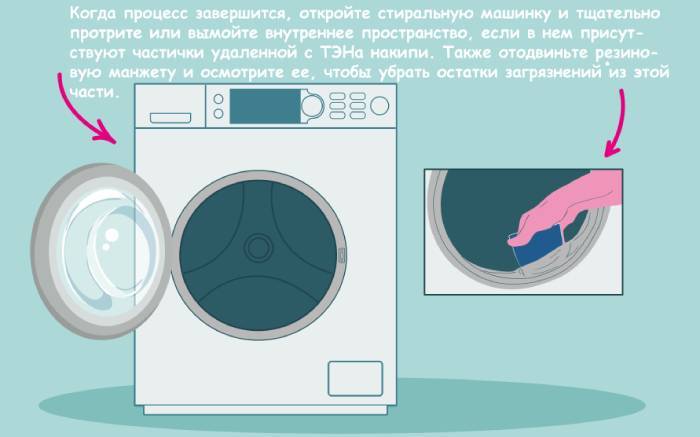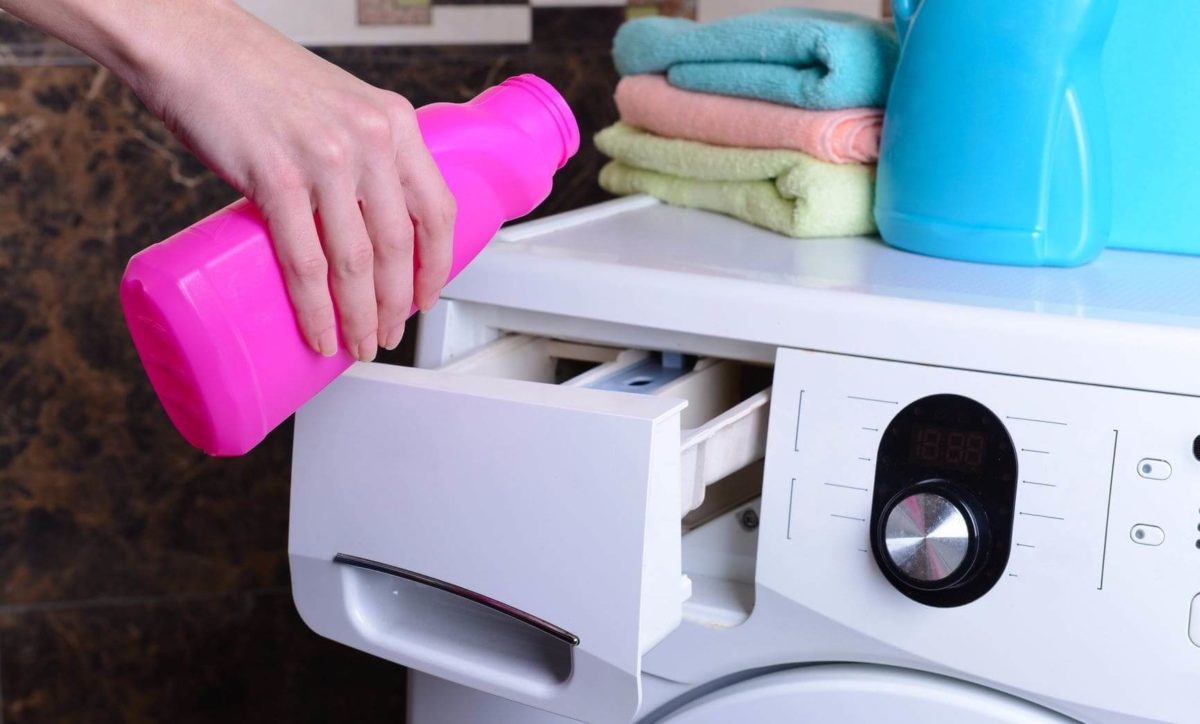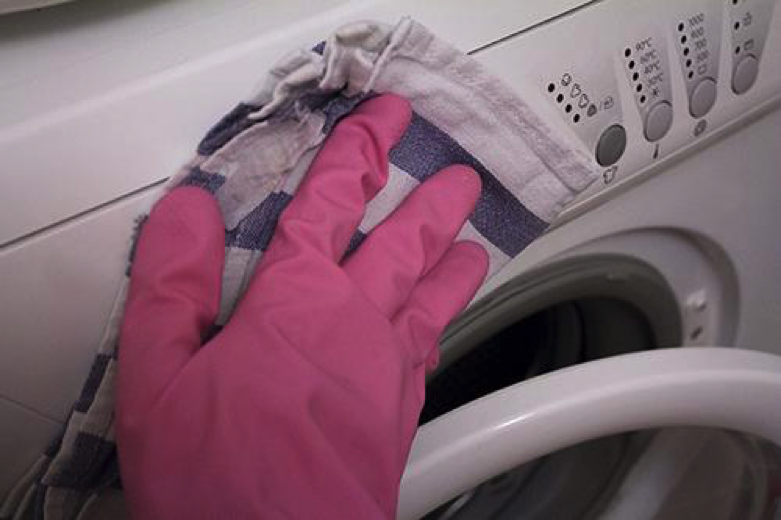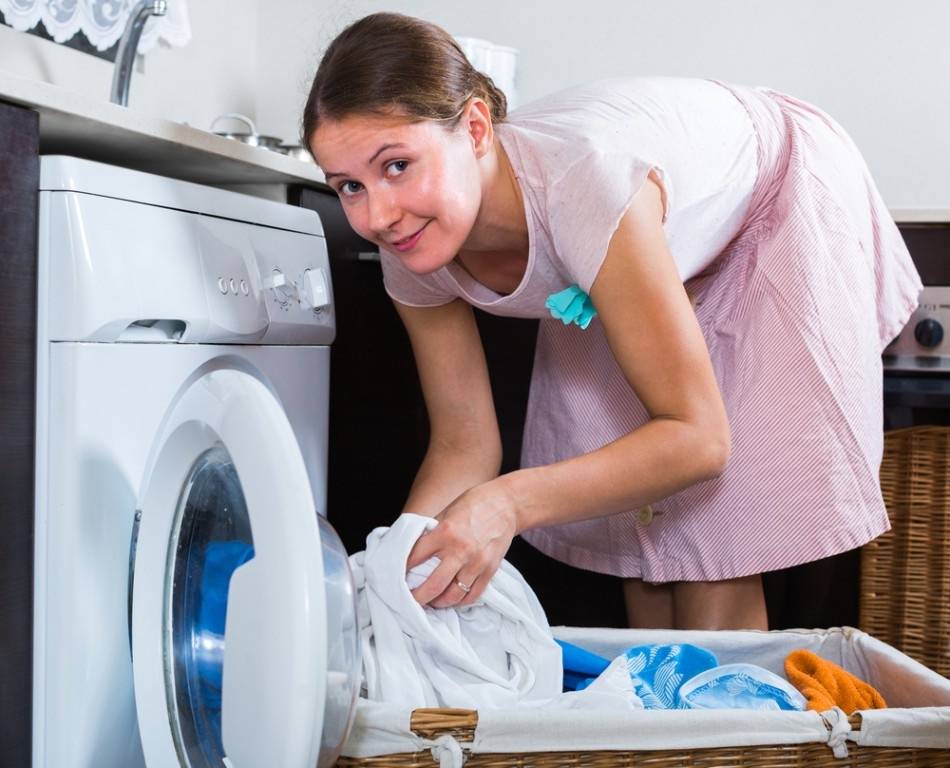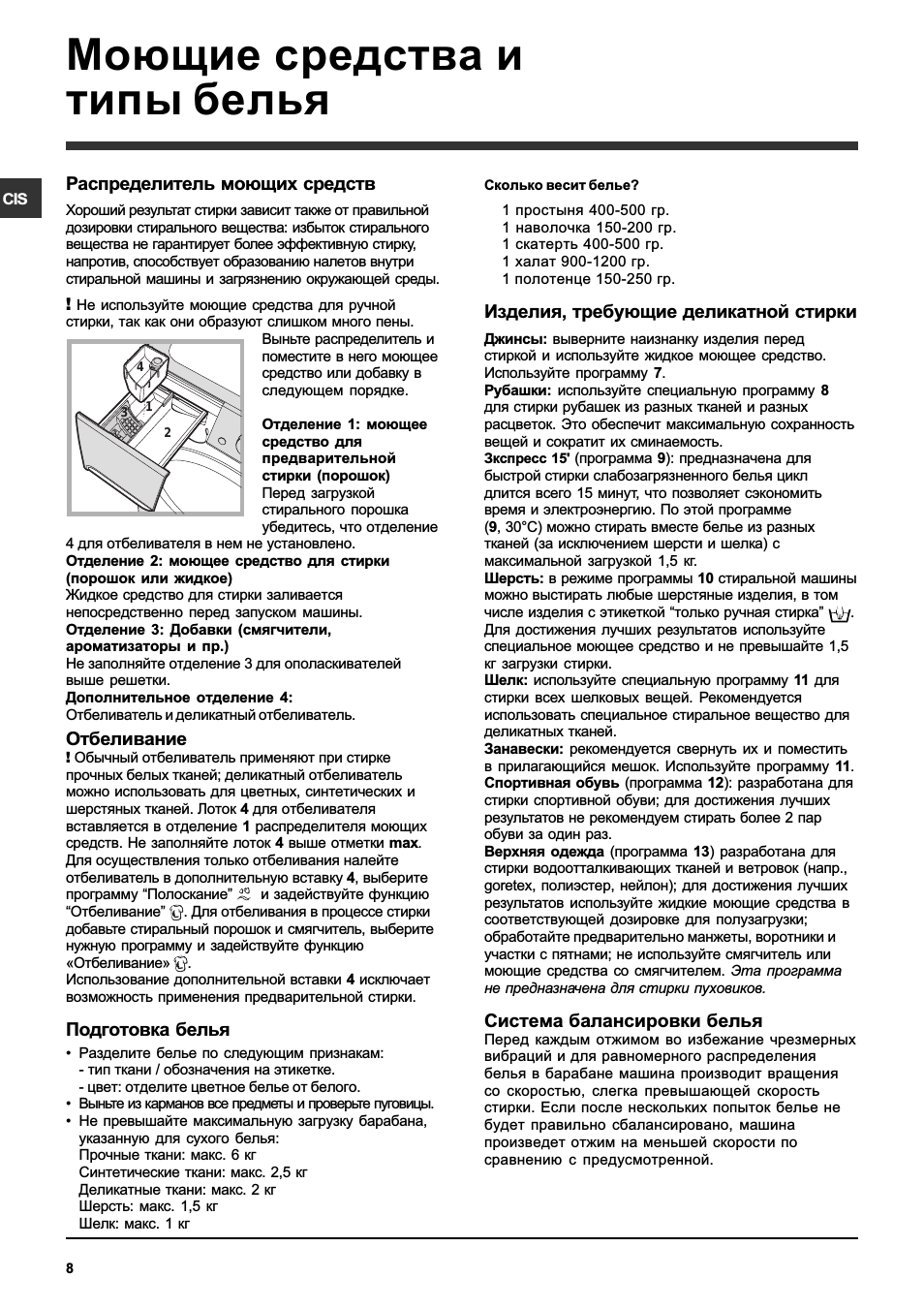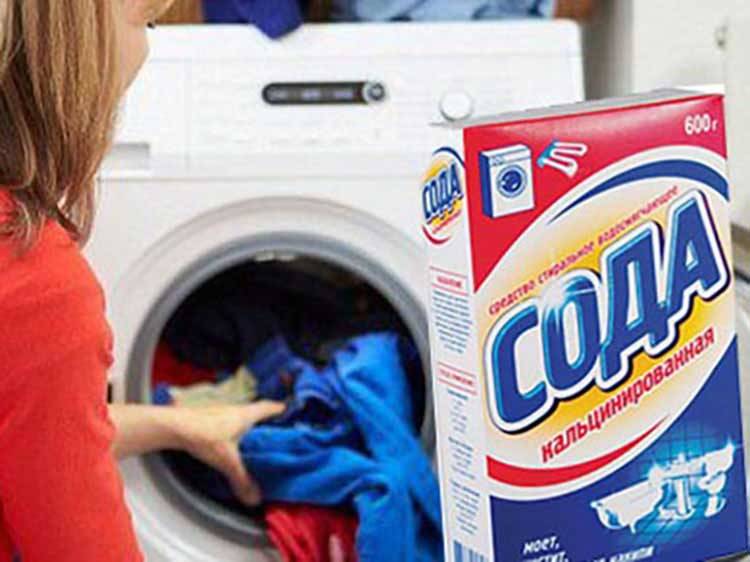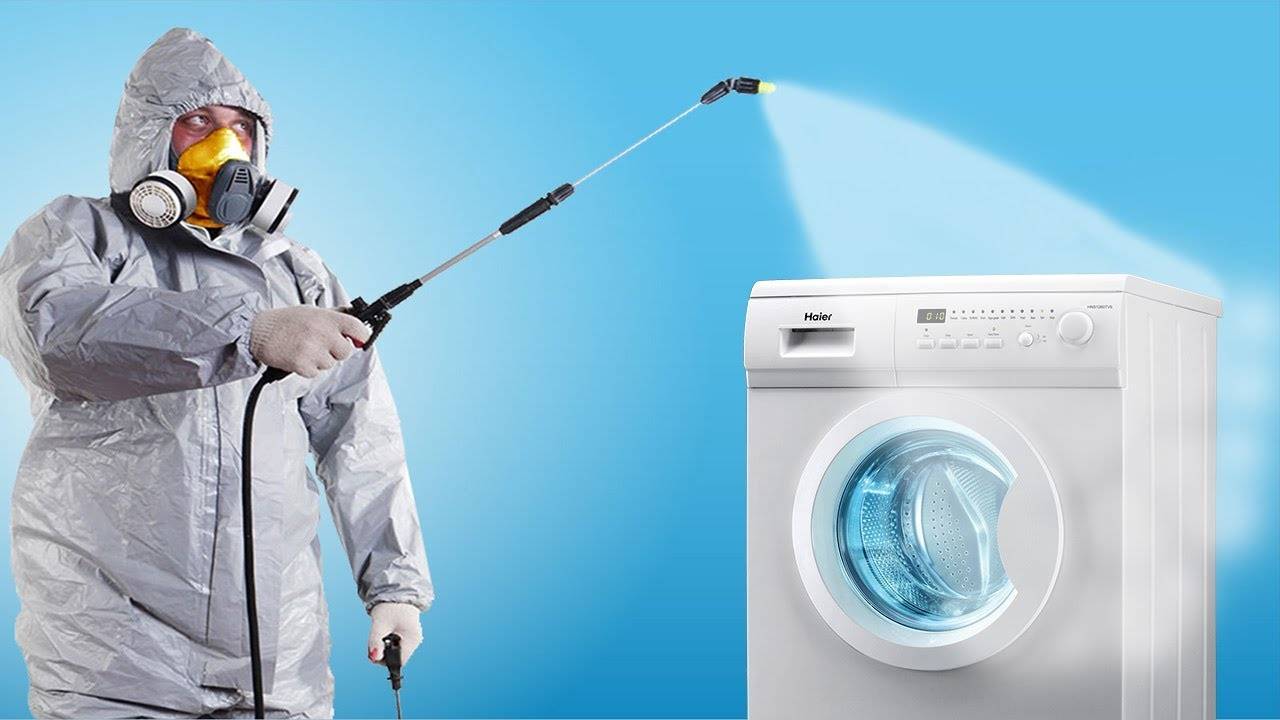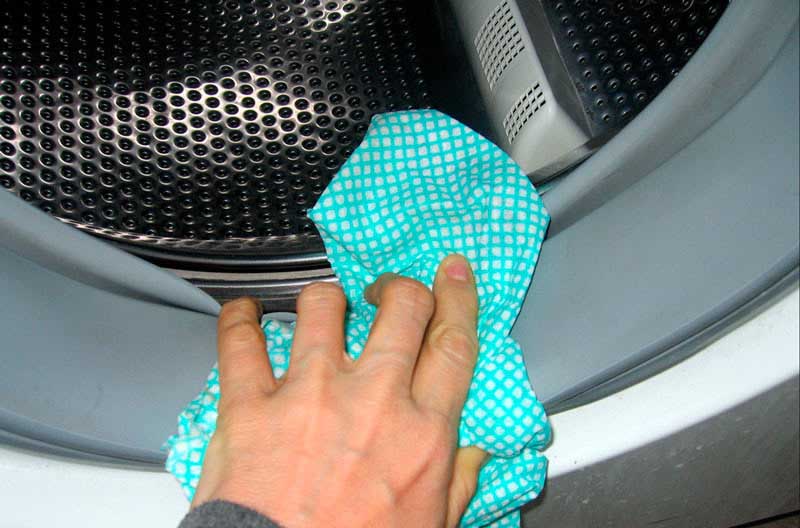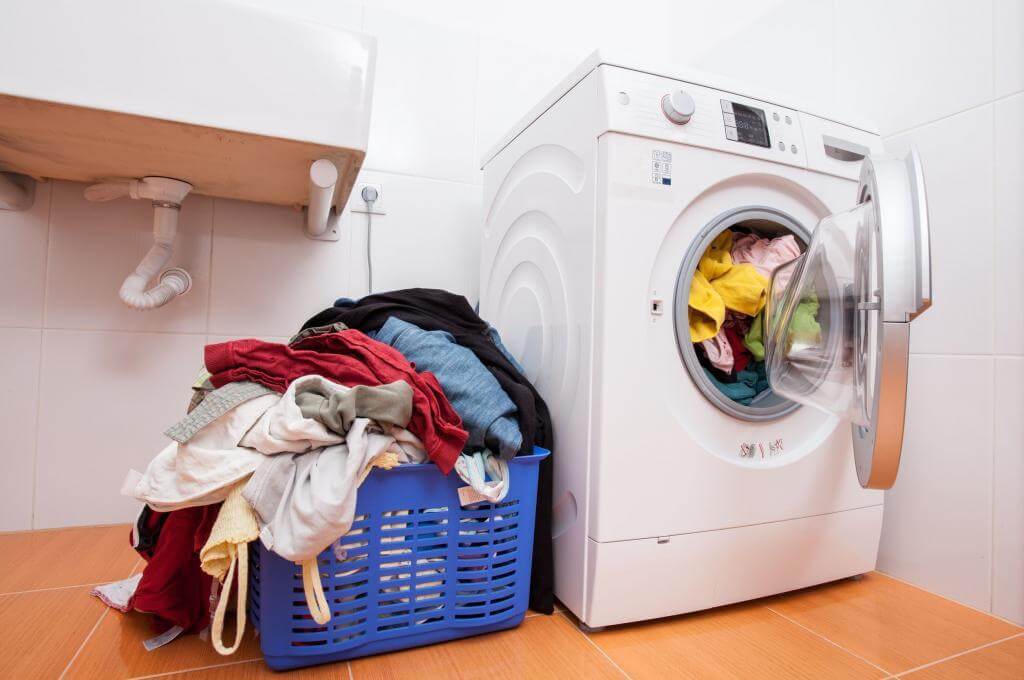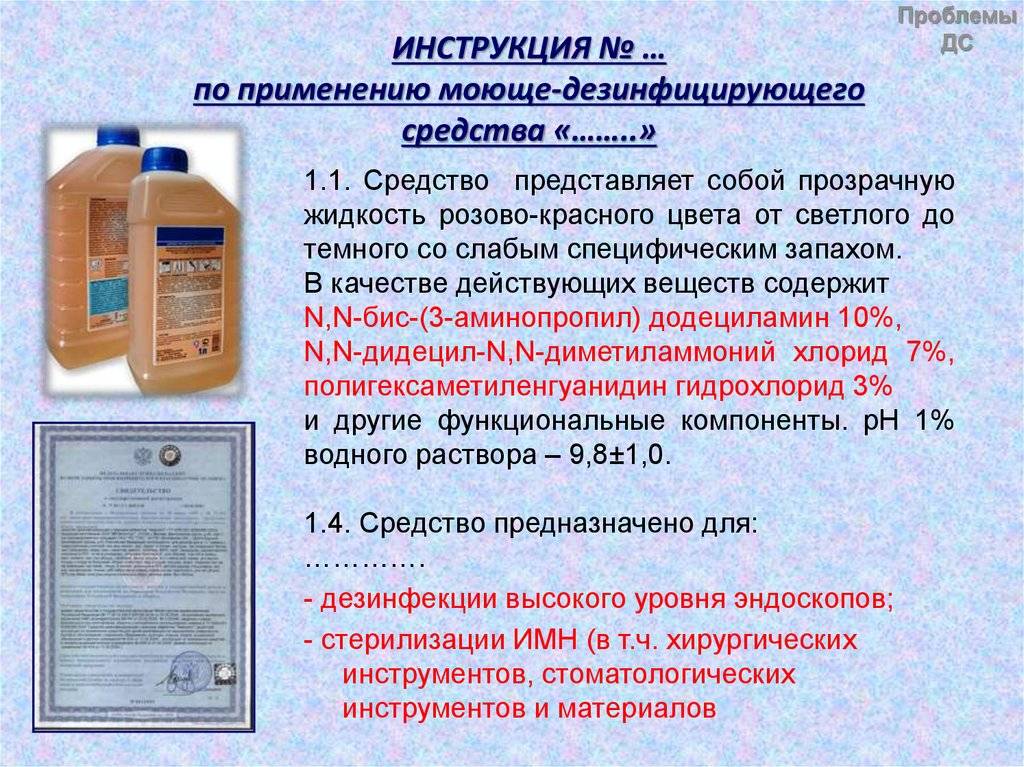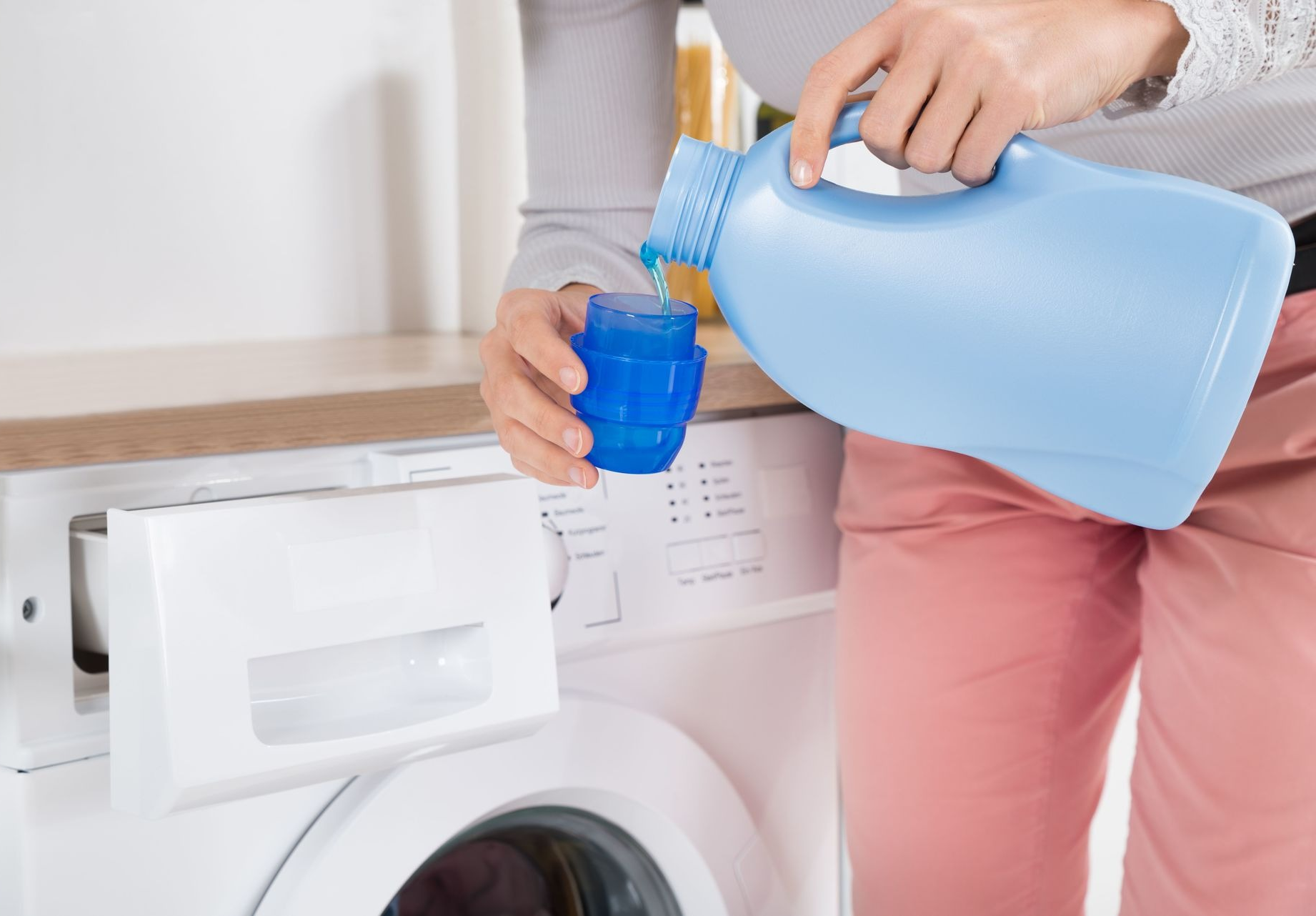Why disinfect the washing machine
Disinfection (disinfection) - measures aimed at destroying pathogenic microorganisms, as well as toxic compounds at objects in order to prevent them from getting on the skin and inside the human body.
According to the studies carried out, washing clothes, mainly at low temperatures and with gentle detergents, does not lead to the destruction of infectious agents. Bacteria, on the contrary, begin to multiply and spread to other places in the washing apparatus. It is especially dangerous if they get into and remain on towels, diapers, bedding and underwear, and other things that come into contact with the body. The transfer of parasites from wet linen to hands, and then to the oral cavity is not excluded.
The appearance of mold is the result of non-compliance with the rules for caring for household appliances. Active reproduction of molds is observed at high humidity and temperature, which leads to the appearance of dark spots. In addition to the unpleasant odor in the washed laundry, mold releases a toxic substance - mycotoxin, which, when it enters the body, causes a threat:
- irritation and itching - when on the skin;
- cough, shortness of breath - in the respiratory system;
- flatulence, diarrhea, constipation - in the gastrointestinal tract;
- weakening of attention, memory - in the nerve cells, which they enter through the bloodstream.
After each wash, wipe the drum with a clean, dry cloth, remove residual moisture from the rubber seal, rinse and dry the detergent drawer.
To evaporate excess moisture and prevent unpleasant odors, keep the loading door and powder receptacle open for an hour after washing.
It is recommended to disinfect the washing machine at home once every 2-3 months, as well as if mold or odors appear. The procedure involves cleaning the external, internal elements of the device.
We extend the service life of the machine
Manufacturers promise that the machine will last at least 5-7 years. But with skillful handling and compliance with all operating rules, the machine will work even longer. And systematic preventive cleaning must be given top priority. But other events are no less important:
- soften the water with each wash by adding special agents;
- carefully check all pockets to exclude small items, paper, jewelry from getting into the tank and drum;
- do not overload the drum with things, keeping in mind the maximum permissible load weight;
- choose modes for regular washing with water heating less than 90 degrees, with frequent use of high-temperature programs, the machine becomes vulnerable to breakdowns;
- use special mesh bags for washing clothes with metal elements, fading woolen products and shoes;
- control the washing process in order to respond in a timely manner to a leak, an uncharacteristic knock or grinding noise;
- after each wash, wipe the drum and the sealing gum dry;
- leave the hatch door and tray open to ensure free air flow inside the case;
- clean the trash filter at least once a month;
- start an "empty" wash if you do not plan to use the machine in the near future.
Careful handling of electricity is also of particular importance. So, it is strictly forbidden to turn off the machine by pulling out the power cord, otherwise it is easy to damage the control board. Ideally, a voltage stabilizer should be connected to the machine in order to exclude voltage drops that adversely affect the unit system.
The presence of dirt, mold and bacteria in the washing machine has a bad effect not only on the quality of washing, but also on the health of its owners. Domestos will allow you to quickly and effectively overcome all the accumulated troubles, but only with strict adherence to safety rules.
2 Both washing and disinfection
This process can be arranged during washing. Some pests can be killed by high temperatures. Dust mites, active forms of microbes, are susceptible to it, so here it is enough to choose a washing mode at 60 ° C and above. Any oxygen-containing bleach has disinfecting properties, so a regular wash using such agents already disinfects the machine from the inside.
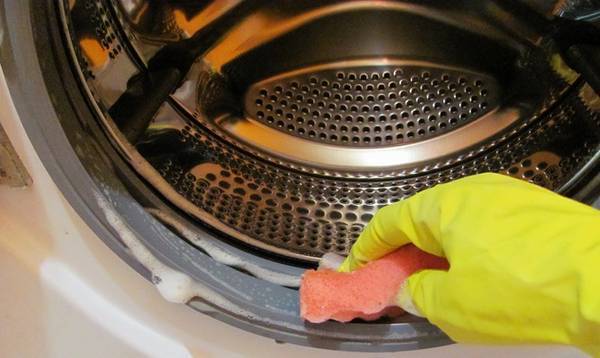
If there is an antibacterial regimen, then it can also be periodically used for disinfection.
Today, some manufacturers of washing machines have taken care of disinfection by integrating various programs that can disinfect the internal components of products at the time of washing. These are programs at high temperatures, with treatment with steam, silver ions, etc. And even more advanced models of machines carry out washing and disinfection with electrolysis.
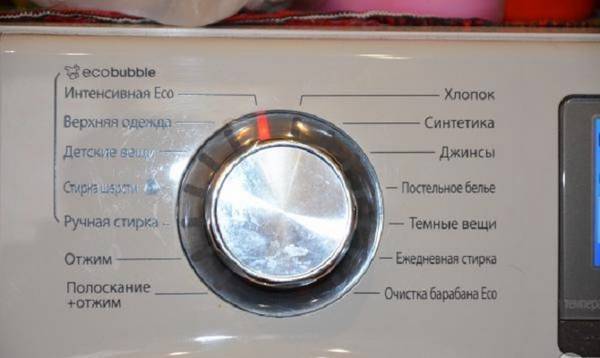
Thus, the very operation of the washing machine in these modes allows disinfection at the washing stage without the use of chemicals. Of course, if you do not fully trust the manufacturer's promises, then you can alternate software cleaning with processing with special tools.
How to clean a washing machine with citric acid
To clean limescale in a 4 kg washing machine, you need 60 grams of food concentrate. Since the product is sold in small packages, 3-4 packages are enough for one procedure. Excessive use of the substance can lead to damage to the unit. How to descale a washing machine with citric acid and remove an unpleasant odor? Follow the step by step instructions.
How to descale a washing machine with citric acid
To rinse the automatic machine from limescale, mold and unpleasant odors, use the following recipe:
- Prepare two packets of lemons. Pour it into the powder compartment.
- Check for foreign objects inside. Remember to fold back the edges of the elastic.
- Run for the full program, which runs at the highest possible temperature.
- Program an extra rinse. If there is no such program, then after the end of the cycle, repeat the rinsing procedure by pressing the corresponding button.
- Don't forget to wash the inside of the drum after finishing. There may be limescale residues that need to be removed.
How to clean a drum with citric acid
The first method removes scale well from the heating device of the machine. How to clean the inside of a washing machine with citric acid, because plaque also remains on the drum?
- Pour food concentrate into the drum. Take no more than 100 grams.
- Set the temperature range from 60 to 90 degrees. A lower temperature will not dissolve the substance.
- Run the longest mode. After 10 minutes, stop the program and pause for one hour to allow the concentrate to react with limescale.
- Then continue the program. If the process is accompanied by a hum - it is the split particles of scale falling into the drain, which means: the cleaning is successful.
- Upon completion, you need to rinse the unit again by activating an additional rinse.
The unpleasant smell coming from the washing machine tank is transferred to clean clothes. Calgon saves the machine from scale, but not from mold. You shouldn't buy expensive pills, run to the store for citric acid.
Important
! There are two types of citric acid: specialized and household. The industry uses a special concentrated liquid, the concentration of which is more than 10%
Shop "lemon" does not contain more than 3% acid
The industry uses a special concentrated liquid, the concentration of which is more than 10%. Shop "lemon" does not contain more than 3% acid.
Each brand of washing machine has its own structural features. Brands LG, Bosch produce models with very wide elastic bands between the door and the drum.
In which socks often get stuck and things disappear
... The rubber seal of the Samsung is not so wide, but when cleaning it, it complicates the task.
How to wash a washing machine with citric acid? You need about 300 g of edible lemon, which you need to fill in the powder container. Turn on the boil mode for kids or set the maximum temperature in the settings.

The main requirements for such cleaning:
-
Use citric acid 3%
which is sold in a grocery supermarket. Not to be confused with lemon juice, which is useless as a cleaning agent. -
Do not add washing powder
. -
Do not wash clothes this way.
.
After the descaling procedure, check the presence of dirty residues in the drain and in the washer drum. At the end of the mode, put on an additional rinse.
This method saves you money and is safe, does not shorten the life of the assistant.
It is better to observe the nuances when using:
-
The way to clean the drum with a lemon is simple
, but you should not carry out the procedure often, as this affects the spare parts of the washing machine. -
When the water in the drum is heated too high
, the temperature sensor could be damaged. -
Do-it-yourself car cleaning
so that large pieces of limescale do not get stuck in the parts of the appliance.
Causes of mold in the washer
There are a lot of reasons for the mildew in the washing machine. But almost always the owners of the unit, who do not follow the rules of caring for household appliances, are to blame for the increased reproduction of the fungus.
As already mentioned above, mold can only grow and multiply intensively under appropriate conditions. Ideally, this is 90% humidity and 20 ° C temperature. Small deviations from these indicators are also quite acceptable for microscopic fungi.
In the bathroom, the washing machine will always be in a humid, warm atmosphere. If possible, it is better to immediately install the machine in another, drier room.
In a person's dwelling, such conditions are maintained year-round in the bathroom, therefore it is extremely undesirable to install a washing machine here.
For this purpose, a kitchen or a corridor is more suitable. If there is no choice and installation is possible only in the bathroom, you should definitely take care of good ventilation.
Moisture remains on the cuff, inside the tank and on other parts of the unit at the end of the washing process of the loaded laundry. She needs to be given time to evaporate, leaving the door open for these purposes.
As a result, water droplets left after washing inside the machine create excellent conditions for the life of molds.
At the end of the wash, a certain amount of water almost always remains in the folds of the rubber cuff, which acts as a seal for the door. Gradually, it will evaporate, which is guaranteed to ensure high humidity inside the machine. This is what mold spores need to grow rapidly.
In order to save energy, the owners constantly wash in low-temperature water. This is fraught with the fact that the components of the washing machine are not disinfected by high temperatures.
The use of programs with modes from 60 ° C and higher causes the growth of fungi to stop and their death. Lower temperatures only contribute to their development.
In this case, it is not at all necessary to constantly use these detergents. It is enough to alternate after 3-4 washes with ordinary powder.
It is not necessary to wash only pure white linen with modern detergents with the addition of bleach. Some colored items will not fade when washed with the above powder
It is also a possible reason - improper washing with rinse aid. When washing with fabric softener, be sure to use an extra rinse.
If this is not done, again in order to save money or simply out of ignorance, the rinse aid particles remain on the door, in the folds of the rubber cuff, on the drum mesh and the walls of the tank. Such a breeding ground is excellent for mold growth.
Mold formation on the washing unit can be caused by improper connection to the sewer. As a result, the water does not drain properly and some part of it remains inside the machine.
Stagnant dirty water is the best way to promote the development of colonies of molds.
In order to correctly connect the washing machine to the sewage system, it is advisable to use the manufacturer's recommendations for self-installation or invite a master
Professional tools overview
Of the professional disinfectants, the most effective are:
- Dr. Teng Antibacterial;
- Dr. Beckman;
- SANDOKKAEBI;
- Multidez-Teflex.
Dr. Teng Antibacterial
This product removes scale from the washing machine and disinfects it. Promotes fast and efficient descaling from drum and heating element. There are no acids in the composition of the product, therefore, the elements of the machine, which are made of metal / plastic / rubber, will not break.
Dr. Beckman
Liquid agent Dr. Beckman has a bluish color, has a specific odor. It includes:
- tenside neitones;
- flavoring;
- hexylcinnamal.
The powder cleaner has a slightly different composition:
- zeolites;
- oxygen-based bleach;
- flavoring;
- limonene;
- hexylcinnamal.

Dr. Beckman provides:
- protection of metal parts of the machine from corrosive effects;
- elimination of large pollution;
- elimination of mold formations in the drum, heating element, pipeline;
- prolongation of the operational period.
SANDOKKAEBI
This Korean cleaner allows you to clean the drums of top-loading / front-loading washing machines. The product removes hard water plaque well. It is sold in packages of half a kilogram.
Multidez-Teflex
This disinfectant is made in the Russian Federation. It has antimicrobial effect and also destroys viruses. On the surfaces that are treated with it, an almost invisible film forms, which provides a residual antimicrobial effect. Multidez-Teflex does not corrode metal parts.
Are certain tissue types more susceptible to the virus than others?
The duration of the virus varies by tissue, as some materials are more porous than others.
The researchers believe that the fibers in the porous material trap virus particles, dry them and break them apart, while smooth surfaces such as leather and vinyl can be cleaned.
It is believed that synthetics, like polyester, can retain germs longer than breathable cotton-based fabrics, so you need to thoroughly wash your synthetic outerwear, underwear and dresses.
As information and research related to COVID-19, the disease caused by the coronavirus, continues to evolve, research into it tells us about the virus's ability to remain on surfaces such as cardboard, steel, copper and plastic, door handles and high-traffic areas.
Some viruses can remain active after two to three days on plastic and stainless steel, 24 hours on cardboard, and four hours on copper. And most likely, some of the details of clothing such as buttons, zippers and others can be made from these materials.
Is it permissible to use such a tool?
Many housewives will say that only whiteness, Domestos, ACE and other means of a similar action are able to cope with dirt in a washing machine. But manufacturers do not agree with their opinion and, on the contrary, strongly do not recommend using the mentioned brands for preventive cleaning. The reason for the ban is in the presence of chlorine in their composition - an aggressive cleaner that can harm the insides of the machine.
But there is a caveat - only prolonged contact with chlorine is destructive for the machine. Therefore, a single cleaning at an interval of at least 6 months will not damage even the most vulnerable parts of the machine: rubber gaskets and hoses with nozzles. The main thing is to strictly follow the instructions and not forget about the rules of personal safety. Algorithm for cleaning cars with Domestos.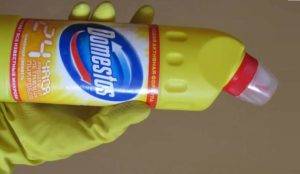
- We put on rubber gloves to prevent the product from getting on the skin of the hands.
- Make sure there are no dirty things in the drum.
- Apply the liquid evenly to the drum and the hatch cuff.
- We close the door tightly and do not approach the typewriter for 20 minutes.
- After 20 minutes, pour another 50 ml of Domestos into the drum and start the machine on the Rinse program.
- At the end of the cycle, we repeat the launch, chose a mode with a water heating temperature of over 90 degrees and put about 200 grams of dry citric acid into the main compartment of the tray.
- We wipe the drum, cuff, door and powder receptacle dry and leave the machine open for airing for at least an hour.
Wash with Domestos carefully. It is necessary to control the cleaning process, as often the machine begins to crackle quietly
In this case, the machine stops and the pump, waste filter and drain hose are thoroughly rinsed out. We must not forget that a strong cleaner will provoke a rapid lag of hard deposits and scale, which cause blockages and seizure. The main thing is to react in a timely manner, remove them and continue washing.
The effect of the procedure will manifest itself immediately: fungal plaque and unpleasant odor will disappear. Scale from the heating element will also be removed, which will increase the service life of the washing machine by another couple of years. But if the financial situation allows, it is better to choose more expensive and gentle means instead of powerful cleaners. Their use is absolutely safe, and the comprehensive result will get rid of viruses, bacteria, dirt and all the widows of the fungus. The modern market offers many options: disinfecting soft gels Velvet, Vanish and Belle, removing mold and scale Dr. Beckman, Dr. TEN Antibacterial and Korean SANDOKKAEBI.
Why disinfect the washing machine
There is no reason to doubt the feasibility of disinfecting the automatic machine. Water and powder are in constant contact. This contributes to the appearance of plaque and scale on the internal and external parts of the CMA. Particularly dangerous are places in the washer, where moisture is constantly present or water remains: in the drum, under the boot cuff, in the powder receptacle, in the filter of the drain valve.
In this case, do not expect clean and fresh laundry at the exit. It will be saturated with germs and an unpleasant odor that even an abundant amount of good powder cannot cope with.
Proper care of any automatic machine includes the following procedures:
- washing and systematic wiping dry of the outer parts of the MCA;
- flushing the filter of the drain valve;
- disinfection with special antibacterial agents;
- removal of mold and unpleasant odors;
- descaling.
The first procedure on the list should be carried out regularly, the rest - periodically. In order for the equipment to serve properly and for a long time, do not forget about its timely cleaning. Then the above procedures will only be of a preventive nature. Disinfection is carried out at home, and there are no difficulties in this. But how to properly disinfect the washing machine, let's talk about this further.
Disinfection during wash
Disinfection of washing equipment can also be carried out during washing, since many bacteria and most microorganisms begin to die when the water temperature is 60 degrees. You can, for example, select the "Synthetics 60" or "Cotton 60" washing mode.

Whirlpool cars are equipped with an "Antibacterial" mode. Including this mode, the water temperature rises to 80 degrees. This temperature lasts for fifteen minutes.
And the Miele devices have the "Hygiene-cotton" option. In this mode, the water temperature is 60 degrees for one hour. You can also use the Boil option, which kills the dysentery stick.
The cars produced by Whirlpool, LG, Daewoo contain a steam option, which also destroys bacteria.
Correct use of cleaning agents
Cleaning the outside of the washing machine is carried out as follows. First of all, it is necessary to dilute a little dishwashing liquid in a large amount of water.
Next, moisten a cloth in this solution and wipe the front side of the washing machine with it, paying attention to the hatch door
Then wipe the washer dry with a dry cloth. Next, you need to process the glass of the hatch. A glass cleaner is suitable for these purposes.
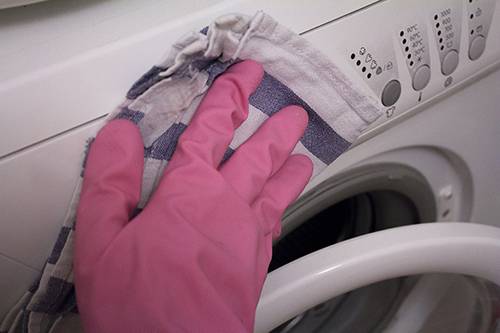
The body of the washer must not be cleaned with the following products:
- Dry powders;
- Abrasive substances;
- Substances containing chlorine.
The drain filter needs cleaning at least monthly. This is necessary so that dirty water can drain well from the machine. Regular cleaning of the drain filter also prevents unpleasant odors. This element of the machine can be found on the lower faceplate of the washing machine. You need to unscrew it counterclockwise.
Before dismantling the filter, place a dry cloth under the device. Indeed, at the moment of unscrewing it, a small amount of water may flow out of the filter. The filter should be cleaned under a pressure of water using a detergent. You can also disinfect it with Domestos.
The powder drawer is a place where bacteria and even mold can grow. Therefore, it must be rinsed without fail. To remove the tray, you need to push the latch, then gently pull it towards you.

A heavily soiled tray should be soaked in a solution of detergent and water for a couple of hours, then cleaned with a toothbrush. To remove limescale it is necessary to use soda ash (soda ash or baking soda). Then you can disinfect the tray with Domestos.
It should be noted that the powder receptacle must be cleaned and wiped with a dry cloth at the end of each wash.
The hole for the powder receptacle must also be cleaned with a sponge and cleaning agent. After cleaning, wipe the tray dry with a cloth.
You can remove the mold and remove the foreign odor in the machine first with soda, and then with citric acid. The first agent is used to clean the drum of the device. To do this, you need to take a soft sponge. With its help, apply slightly moistened baking soda to the washing machine drum. The inner side of the cuff can be processed in the same way.
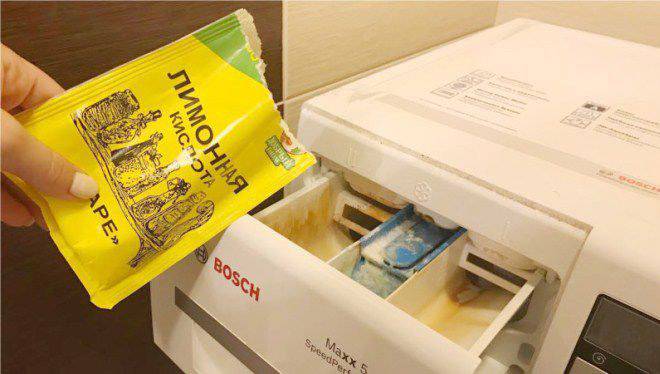
The cuff should be spread apart during cleaning. About an hour after applying the product, you need to clean the washing machine drum and the cuff with a sponge. Then you should rinse well, and then wipe dry the cleaned sides of the above parts of the washing machine.
Acetic acid removes odors and kills germs. But after using it, there will be a specific smell in the car. Rinsing with fabric softener will help remove it.
The most important procedure is the disinfection of the washing machine from the inside. It allows you to get rid of viruses, kill all bacteria and destroy fungus. It is possible to disinfect washing equipment only with the help of special means.
These include chlorine and chlorine-based products.However, chlorine should only be used in exceptional cases. For example, when you need to fight a virus or infection. In other cases, it is recommended to use other, more delicate disinfection methods.
For example, various oxygenated bleaches can be used:
- Vanish;
- Velvet;
- Belle;
- Synergetic.
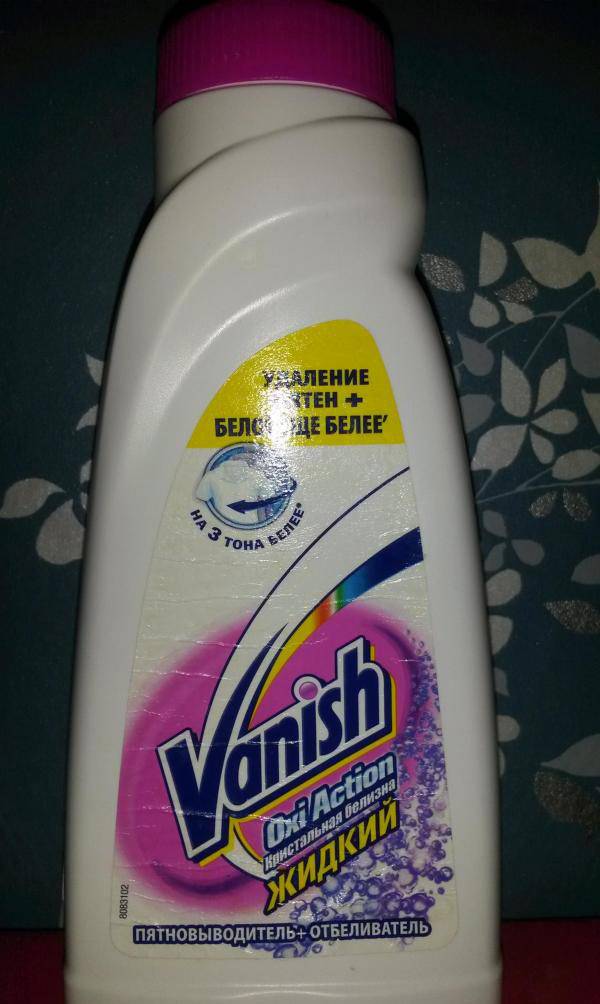
These products have disinfectant properties. You need to add bleach during normal washing.
To clean the parts from scale, get rid of the mold coating and defeat bacteria, you must use:
- Dr. Beckman;
- SANDOKKAEBI cleaning agent;
- Means Doctor TEN Antibacterial.
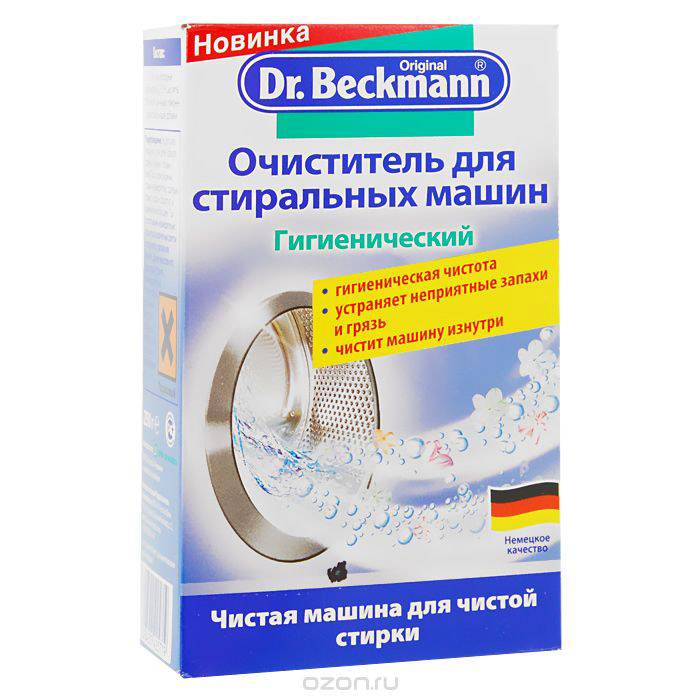
Detergent compartment
The tray for powder and fabric softener becomes covered with mineral salts from hard tap water and residues of liquid and powder detergents with each wash. It is difficult to wash the tray in a typewriter, so you need to take it out and soak it for 1-2 hours in soapy water, but better in a concentrated solution of Domestos or a similar disinfectant. When all deposits and build-ups have gone away from the plastic, the tray can be rinsed with running water, and the most difficult places can be rubbed with an unnecessary toothbrush with a hard bristle. The hole for the tray must be cleaned, because there are also particles of dirt, water and detergents that will become a breeding ground for microbes.
Does washing clothes kill viruses like coronavirus?
This is a tricky question because a technically correct answer can be misleading.
The following definitions are proposed for "cleaning" and "disinfecting":
- Cleaning refers to the removal of germs, dirt and contaminants from surfaces. Cleaning does not kill germs, it removes them, reducing the number and risk of infection spreading.
- Disinfection refers to the use of chemicals to kill microbes on surfaces. This process doesn't necessarily clean dirty surfaces or remove germs, but by killing germs on the surface after cleaning, it can further reduce the risk of infection spreading.
3 Conclusion on the topic
In order for the car to serve for a long time and not become the cause of diseases and allergies in the family, it is necessary to carry out a general cleaning of the equipment at least once a month. Which means to use, everyone decides independently. But the use of special substances is still necessary, as well as regular disinfection using the appropriate modes built into the machine itself. Do not forget that the laundry washed in the unit, which has not been cleaned and disinfected for a long time, will be very conditionally clean. On its surface, there may be unpleasant guests in the form of fungi, pathogens and moldy crops. And the very quality of washing will deteriorate sharply.

